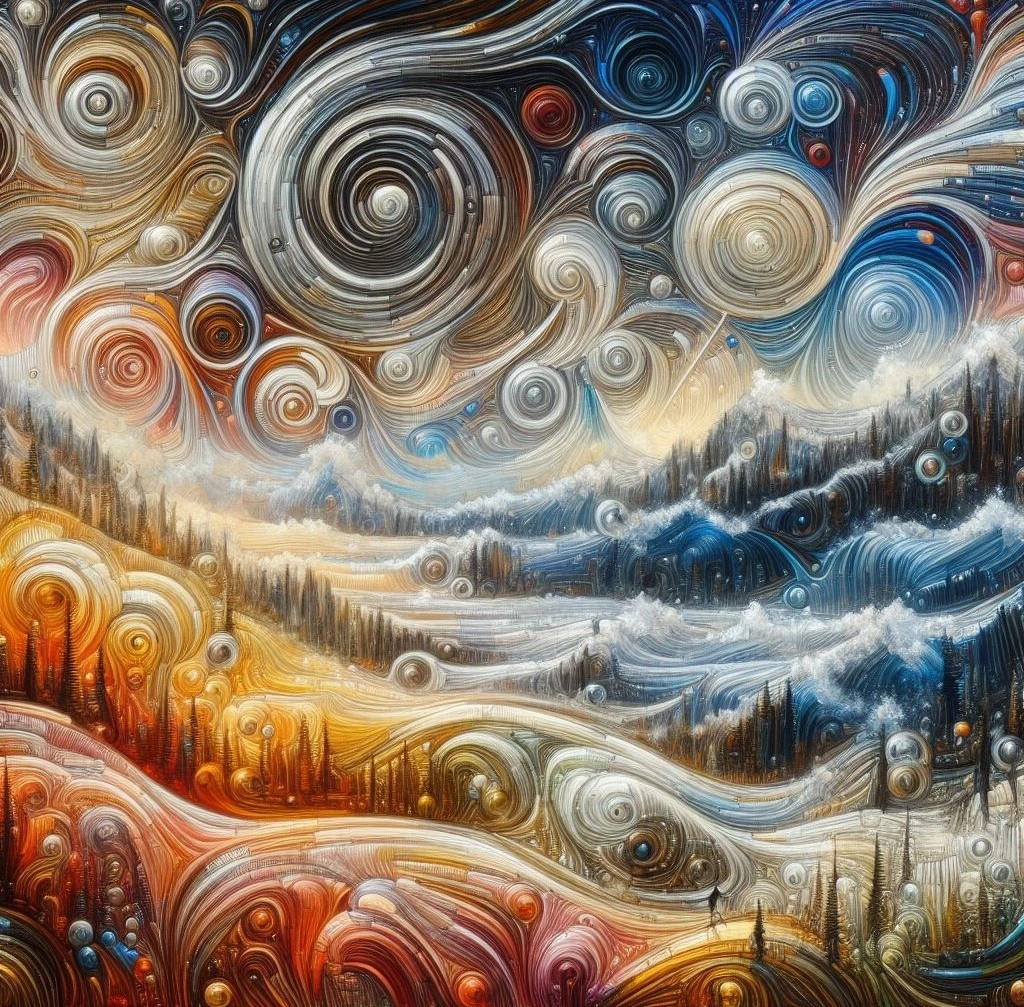Diving into Generative Art : Unleashing Creativity through Algorithms


Generative art is a captivating fusion of artistic expression and computational prowess, evolving through the marriage of computer programming and algorithms. Artists design systems or rules that autonomously generate artwork, yielding unique and often surprising results. This article explores the origins, techniques, and profound impact of generative art on the artistic landscape, delving into its innovative approach and creative potential.
Describing Generative Art
Generative art transcends traditional artistic methods by harnessing computational processes to craft dynamic and evolving artworks. Artists delve into the realm of algorithms, defining rules and parameters that shape the artwork's creation. Rather than dictating every detail, they collaborate with the algorithm, guiding its course to produce a continually shifting masterpiece.
Tracing the Roots and Inspirations
The inception of generative art finds its origins in the mid-20th century, notably with innovators like John Cage, who integrated chance and randomness into music composition. The emergence of computer technology in the 1960s and 1970s unlocked fresh avenues for artists to delve into generative methods. Visionaries such as Frieder Nake, Georg Nees, and Vera Molnár pioneered the exploration of art through computers, algorithms, and mathematical concepts during this transformative era.
Methods and Styles
Generative artists employ a variety of techniques and approaches to craft their unique artworks. These methodologies include :
- Algorithmic Art : Artists craft algorithms dictating the rules and parameters for artwork creation. These algorithms may utilize mathematical equations, logical operations, and procedural instructions to shape visual elements.
- Randomness and Chance : Generative art frequently integrates random and chance elements, resulting in unpredictable outcomes. Random numbers, noise, or probability-based algorithms contribute to the generation of shapes, colors, and compositions.
- Iterative Processes : Artists employ iterative processes, repeating sets of rules or operations multiple times with slight variations. This iterative approach yields complex and evolving visual patterns over time.
- Data-driven Art : Generative artists harness data as input to generate their artwork. They analyze and process datasets, including images, text, or sensor data, transforming them into compelling visual representations.
- Interactive Art : Some generative artworks encourage viewer participation and interaction. These pieces respond to user input, offering a dynamic and responsive experience that evolves with audience engagement.
Influence and Importance
Generative art has revolutionized the art landscape by breaking conventional norms and fostering innovation. By merging creativity with technology, it has unleashed a realm of endless possibilities and experimentation. Intersecting with computer science, mathematics, and AI, generative art cultivates interdisciplinary collaborations, driving technological advancements in the art domain.
Moreover, the collaborative nature of generative art challenges the traditional notion of authorship, blurring the lines between artist and algorithm. This symbiotic relationship sparks discourse on the role of artists in the creative process, adding depth to the art-making narrative.
Beyond the art realm, generative art finds application in diverse industries like design, architecture, and entertainment. Its influence extends to data visualization, digital installations, and virtual reality, highlighting its versatility and adaptability across various domains.
Conclusion
Generative art stands at the crossroads of artistry, computation, and creative coding, ushering in a new era of artistic expression. Through the adept utilization of algorithms, randomness, and iterative processes, generative artists craft dynamic and ever-evolving masterpieces that defy conventional artistic norms. This innovative approach not only paves the way for boundless exploration and collaboration but also prompts profound contemplation on themes of authorship, creativity, and the evolving relationship between art and technology.
Subscribe to our newsletter to get updated and enjoy a 10% voucher
Apr 13 2024 / Art History



